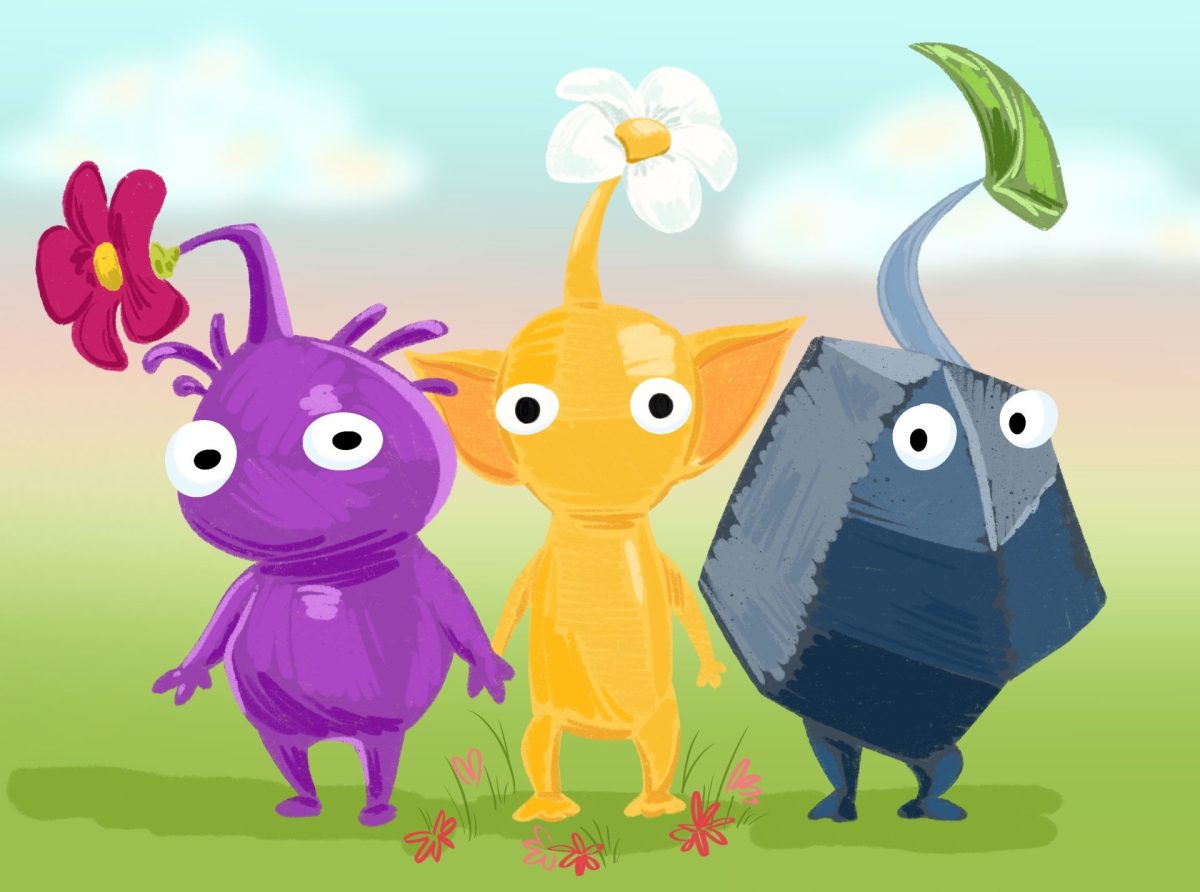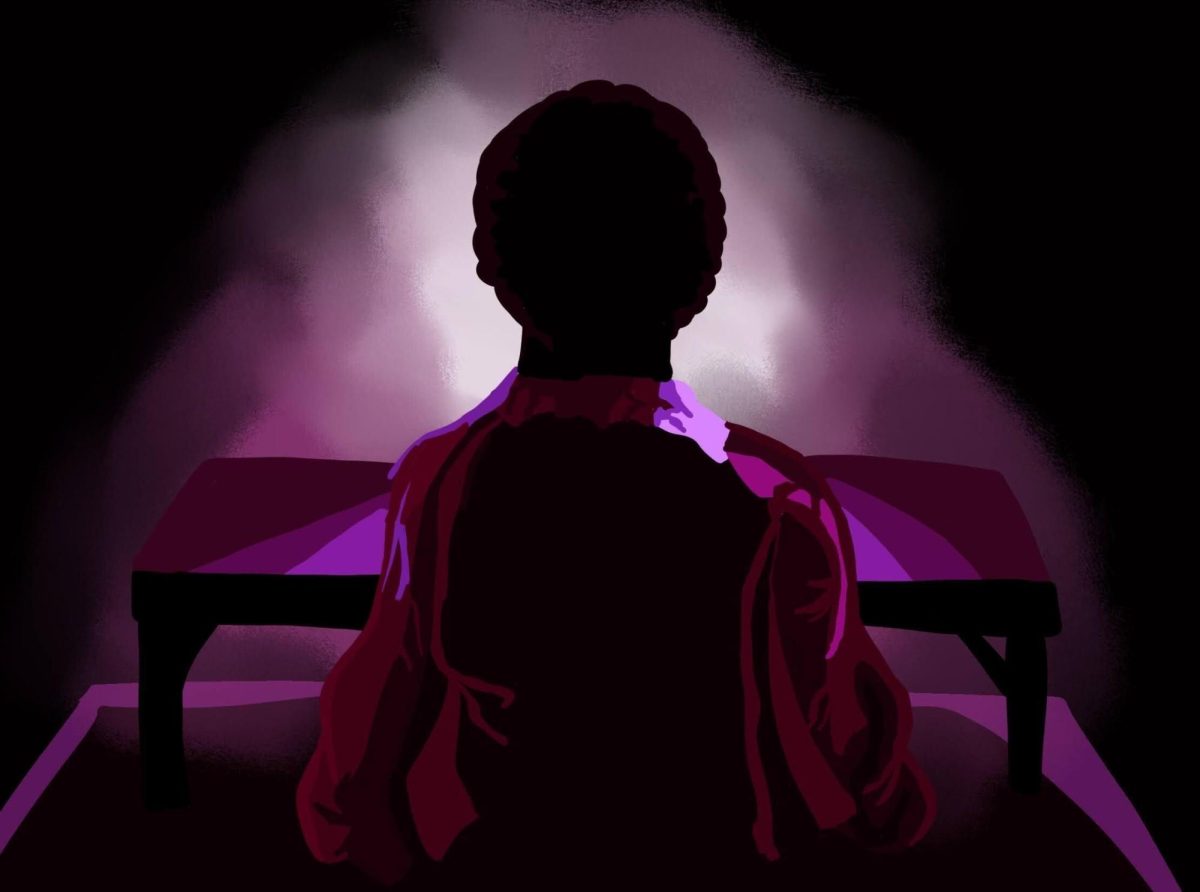The first entry in Nintendo’s real-time strategy series “Pikmin” originally released for the GameCube in 2001. Since then, the franchise saw several long droughts, but Nintendo recently started promoting it again. This past month, they published a physical collection of the first two games for the Switch, rebranded as “Pikmin 1+2.” The art design of the series, which contrasts earthy environments with cartoonish, plant-animal hybrids, looks better than ever in HD for the first time, but the question still remains of how the games themselves hold up.
The Original
“Pikmin 1” begins with the player-character Captain Olimar crash-landing on a foreign planet. The player then has 30 days to retrieve broken parts of Olimar’s spaceship and escape before starvation sets in. This simple plot perfectly sets up the diegetic structure of the game. At the end of each in-game day, some enemies respawn and Olimar returns to the spacecraft. At the end of the 30 days, the player must restart the entire game if they have not collected enough parts to repair the ship. The dual threat of both short-term and long-term time limits forces the player to constantly be on their toes, multitasking to make the most out of each day.
Olimar is completely powerless on his own but he can command a fleet of multicolored helpers called Pikmin, which are created by converting defeated monsters into seeds. They can attack enemies, build bridges across the 3D world or carry ship parts back to Olimar’s base.
The game’s greatest strength is that every single action you take contributes to the core gameplay loop. Either you are making direct progress by collecting ship parts and exploring the levels, or you are creating new Pikmin which will later help you collect ship parts. The meaningfulness of each interaction keeps the time limits from becoming too despair-inducing and results in a tightly-designed experience that never slows down.
The Sequel
“Pikmin 2” improves upon its predecessor in a variety of ways. The several playable characters can be upgraded throughout the game and the Pikmin AI is more intelligent. The graphics are significantly better, bringing more intrigue to the photorealistic world. The number of enemies and bosses expanded to a staggering degree, with each new enemy maintaining the whimsical charm of the original game.
Despite these improvements, “Pikmin 2” remains a highly polarizing entry in the series. This is largely due to the addition of caves which fundamentally change the structure of the game. No longer is there an overarching 30-day limit. Instead, the player has as much time as they want to beat the game. The overworld day-night cycle is also de-emphasized because a majority of the gameplay takes place in subterranean levels. In these caves, time does not pass as normal and new Pikmin cannot be created.
These two changes completely upend the previously established core loop of the franchise. Whereas in “Pikmin 1” the strategy was derived from determining the most time-efficient way to collect ship parts, the strategy in “Pikmin 2” is derived from preserving as many Pikmin as possible while fighting through a cave. As such, combat is more intense and level design is less interesting. This shift may be welcomed by some players, but it unfortunately comes at the cost of the airtight systems that defined the original title.
The Verdict
In many ways, “Pikmin 1+2” is an odd couple. The first game is a very small-scale project with a gestalt philosophy toward gameplay design. The second game has a longer campaign, post-game content and additional side modes, all of which are more action-heavy. In combination, these drastic differences provide something of value for every type of player. At $50, “Pikmin 1+2” is worthwhile for any real-time strategy fan who has yet to play these titles.
The Switch is now the most Pikmin-heavy platform in history. With the 2020 re-release of “Pikmin 3 Deluxe” and the long-awaited new entry “Pikmin 4” coming out over the summer, every mainline game is now available for physical purchase on the latest console. This saturation is part of Nintendo’s recent push to bring the franchise into the mainstream and it provides further incentive to delve into the series’ roots (literally or figuratively) with “Pikmin 1+2.”








